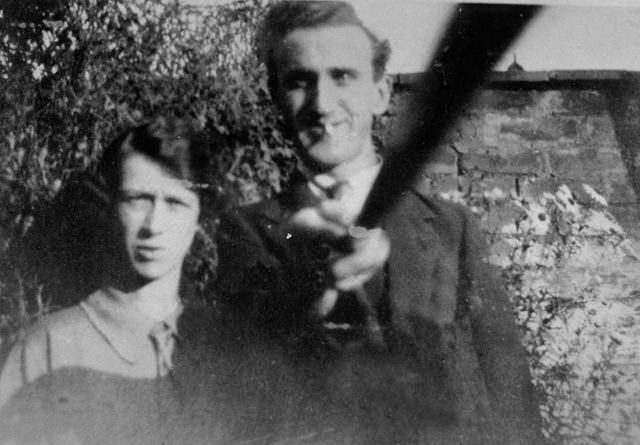Unlock the Magic in Your Story Now
Get the Free 20 questions to Ask Before Launching Your Idea workbook when you sign up for occasional updates.
Get the Free 20 questions to Ask Before Launching Your Idea workbook when you sign up for occasional updates.
Articles filed in: Strategy
When Does Your Marketing Start?
 The conventional definition of marketing describes it as the activities we do to promote sales of products or services. If we accept this definition, then the bulk of our marketing is done once we’re ready to sell our product.
The conventional definition of marketing describes it as the activities we do to promote sales of products or services. If we accept this definition, then the bulk of our marketing is done once we’re ready to sell our product.
Tactics like list building, data collection, content creation, social media outreach, networking events and leaflet drops might make us better promoters, but they don’t make us better marketers. Unlike the gelato seller who relies on sweltering summer days and the tinkling music from his van to make hay while the sun shines—the best marketers understand that marketing is not just about building awareness. It’s about establishing trust on the road to creating meaning and forging connections, loyalty and love. The kind that makes people queue for a $5 cone even on the coldest winter day.
Your marketing starts with your intention to create products and services that make a difference to the people you serve.
Image by Sebastian Rieger.
The Art Of Discovering Opportunities
 How often do we look down when we could look up?
How often do we look down when we could look up?
How often do we do the obvious instead of exploring what’s been overlooked?
How often do we sit tight when we could dive in?
How often do we make excuses instead of making our mark?
How often do we look away when we could look closer?
How often do we decide to follow instead of taking the lead?
How often would we choose to fail if we saw failure as a stepping stone on the path to opportunity?
Image by Kevin.
How Are Your Customers Convinced?
 Real estate agents get more new listings from the refferrals made by satisfied sellers, than they do from letterbox dropping flyers.
Real estate agents get more new listings from the refferrals made by satisfied sellers, than they do from letterbox dropping flyers.
Hotel rooms are increasingly booked on the strength of previous guest reviews on Trip Advisor, not because of the room sizes and facilities published on their website.
New gym members are often persuaded to join by friends who are already members, while they mostly ignore the newspaper and TV ad campaigns in January.
We allocate marketing resources to promote our businesses in the places where we think our customers are paying attention, often without fully understanding the real impact of the investment we’re making or the potential of the opportunities we’re ignoring. It’s possible to overestimate the effect of lead generation tools and tactics while underestimating the power of a handshake.
How are your customers convinced?
Are you creating opportunities to meet and market to those prospective customers where they are?
Image by Garry Knight.
The Business Of Trust
filed in Strategy
 Trust enables every human exchange. Our society can’t function without it. The belief we have in each other’s promises is so great that it even transcends our immediate circle in the physical world. We order books, book hotel rooms and ride in cars with strangers on the word of others who have recommended them.
Trust enables every human exchange. Our society can’t function without it. The belief we have in each other’s promises is so great that it even transcends our immediate circle in the physical world. We order books, book hotel rooms and ride in cars with strangers on the word of others who have recommended them.
Trust is also the foundation of every business. A business is not merely an organisation that creates value or exchanges goods and services for money. It is the promises we make to our customers in return for their trust. When we put a price on a pair of running shoes or a PayPal button on our website, we’re inviting people not just to buy something, but to trust that we will deliver on the promises we’ve made to them.
The first and last goal of every business is to make promises and then to keep them.
What are you promising your customers? And how are you ensuring those promises are kept?
Image by Alexander Redl & Unsplash.
Getting The Story Formula Right
filed in Storytelling, Strategy
 I often get emails asking about the right and the wrong way to tell a brand story. Questions like:
I often get emails asking about the right and the wrong way to tell a brand story. Questions like:
How long should the story be?
Should we start this way or that?
What’s the best medium to use?
The more important point to consider is not the length of the story or where to begin but how well the story connects with the audience. A good story resonates so well with the intended audience that it changes how they feel and moves them to act.
6 Questions To Ask Before Beginning To Tell Your Brand Story
1. Why are we sharing this story?
2. Who is this story for?
3. What does our intended audience care about?
4. How can we meet our audience where they are?
5. What will our story invite them to believe in or do next?
6. How will we know if our storytelling has succeeded?
The best brand stories begin with the end in mind.
Image by Aaron Guy Leroux.
The Unchanging Nature Of Business
filed in Strategy
 It’s a cool November day in 2014, and a young couple pause on a suburban street to snap a selfie with an iPhone 5C.
It’s a cool November day in 2014, and a young couple pause on a suburban street to snap a selfie with an iPhone 5C.
90 years earlier in a garden in Warwickshire, England (circa 1925), Arnold and Helen Hogg attach a Box Brownie camera to a long stick and take their selfie.

When we think about how to sustain and grow our businesses by remaining differentiated, competitive and relevant, we often begin by wondering how to leverage advances in technology to innovate. While we can’t always reliably plan for a future that hasn’t arrived, we can act on the things we know that are unchanging and constant. The people we serve will always want to be seen and acknowledged, valued and loved. If we begin with that end in mind we’re on the right path.
Images by Robert Couse Baker and Alan Cleaver
Why Do Your Customers Buy?
 How thirsty is the college student who pays almost $5 for a Caramel Macchiato at Starbucks?
How thirsty is the college student who pays almost $5 for a Caramel Macchiato at Starbucks?
Did the fitness instructor really need to upgrade his iPhone 6 to a 7?
Can the mother who religiously gives her kids vitamins each morning prove that they work?
When the CEO hires a contract lawyer is she paying for the piece of paper or the peace of mind his expertise will give her?
The Oxford English Dictionary defines value as; “The regard that something is held to deserve; the importance, worth, or usefulness of something” and its “material or monetary worth”. It turns out that the immaterial—the perception of value that’s created by wants not needs, feelings, not facts, and beliefs, not proof is what drives people to act. We recognise this behaviour in ourselves and witness it in the choices we make every day.
And yet when it comes to marketing our products and services—because it’s harder to do the work of understanding our customer’s motivations than it is to talk about what we want to sell, we lead with features, facts and proof. If value is a story customers tell themselves, then our innovation and marketing must acknowledge and respond to that internal narrative.
Image by Jack Fussell.
How To Build A 21st Century Brand
filed in Storytelling, Strategy
 Forty years ago a brand was an identifier. Branding was what we did to the outside of a product or service after it was conceived and created. Brands became tales woven to increase visibility and memorability using design, clever copy, print and TV advertising to make sure the product was known by the majority of prospective customers. This is how traditional brands like Cadbury, Coca-Cola, Visa and Hertz became top of mind and won big in the days of traditional advertising.
Forty years ago a brand was an identifier. Branding was what we did to the outside of a product or service after it was conceived and created. Brands became tales woven to increase visibility and memorability using design, clever copy, print and TV advertising to make sure the product was known by the majority of prospective customers. This is how traditional brands like Cadbury, Coca-Cola, Visa and Hertz became top of mind and won big in the days of traditional advertising.
The following list is what branding was traditionally designed to achieve:
Objectives Of Traditional Branding
- Awareness
- Attention
- Authority
- Majority
- Average
- Profit
- Dominance
- Outside in
- Shareholder value
- Single bottom line
But this isn’t how you build a beloved brand now. Today a brand is a promise that people align with, believe and invest in and branding begins from the inside out. 21st century brands are purpose-driven. They have a reason to exist beyond making a profit, and they no longer aim to appeal to the average or everyone. Here’s what 21st century branding sets out to do:
Objectives Of Branding in the 21st Century
- Affinity
- Alliance
- Trust
- Individuals & Tribes
- Edges
- Purpose
- Relevance
- Inside out
- Customer-centric
- Triple bottom line
If the nature and function of brands have changed, then the process for developing brands and brand stories must evolve too. We’ll be on our way when we begin by prioritising the objectives on the second list. A brand story is no longer like the top coat of gloss paint applied at the last moment to make the surface shinier and more immediately attractive. It’s the undercoat that often nobody sees, but which allows the brand to endure.
Image by NASA HQ.
What’s Missing?
filed in Innovation, Strategy
 The patisserie opened with great fanfare and then fell flat. The brand had an international reputation, was selling a half decent product in a good location and yet customers didn’t feel like they had a reason to come back. They couldn’t put their finger on it, but the cafe just had no soul.
The patisserie opened with great fanfare and then fell flat. The brand had an international reputation, was selling a half decent product in a good location and yet customers didn’t feel like they had a reason to come back. They couldn’t put their finger on it, but the cafe just had no soul.
It’s easy to get into the habit of working on our advantages. We often reassure ourselves by focusing on strengths or paying attention to the best performance metrics. This reticence to address our shortcomings can blind us to opportunities to do better.
On the journey to perfecting an unforgettable dish, the question talented chefs ask themselves most is; “What’s missing? Many of the groundbreaking ideas and innovations of our time from raw chocolate to bottled water, the iPod to the Tesla were born from understanding not just what was lacking in the product, but also what was missing in the life of the customer and how she might want to experience it differently.
We uncover breakthrough ideas when we address the questions that haven’t already been answered.
Image by Jaume Escofet.
Buzzworthy
filed in Storytelling, Strategy
 On my recent travels in country Victoria, I came across an incredible artisan gluten free bakery miles from nowhere. The owners baked only three types of bread. The bakery sold fresh salad rolls and quality coffee on the premises.
On my recent travels in country Victoria, I came across an incredible artisan gluten free bakery miles from nowhere. The owners baked only three types of bread. The bakery sold fresh salad rolls and quality coffee on the premises.
As we got chatting about how well they had nailed their story, the owner began to apologise for their social media presence. “We know we need to get onto that,” she said. And while she’s right about the need to give her far-flung customers an opportunity to connect and a way to share online—there is no more powerful presence than a great product designed with the customer in mind.
It’s tempting to jump ahead to creating the buzz we believe we need to succeed and harder to do the work of understanding what makes a product buzzworthy in the first place.
Image by Dave Bloggs.